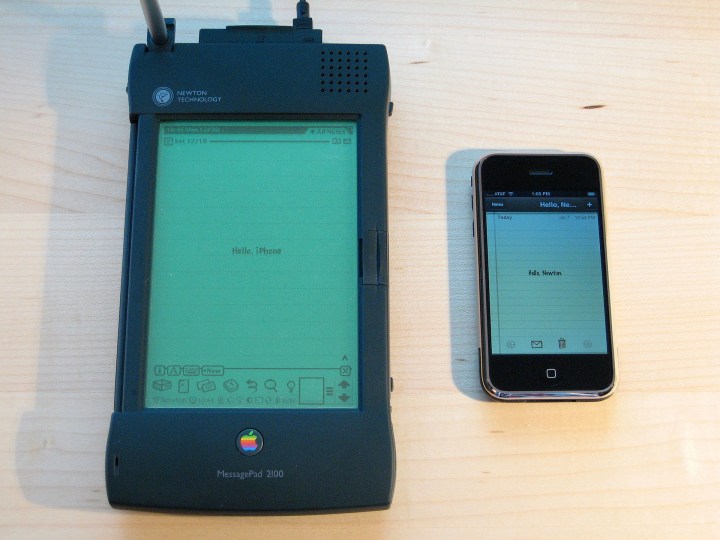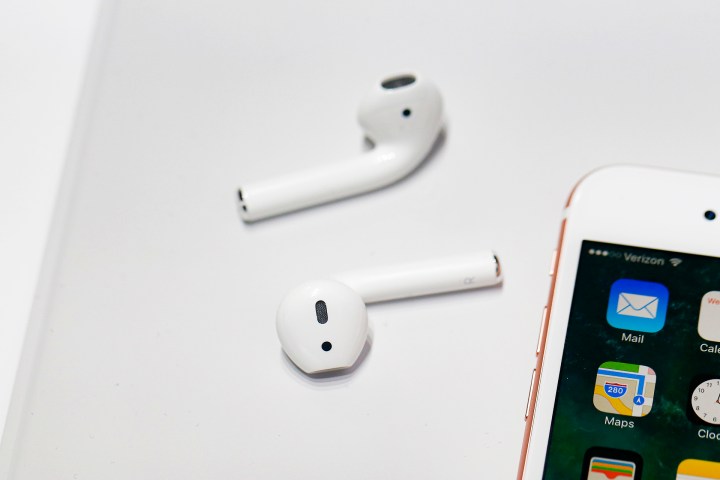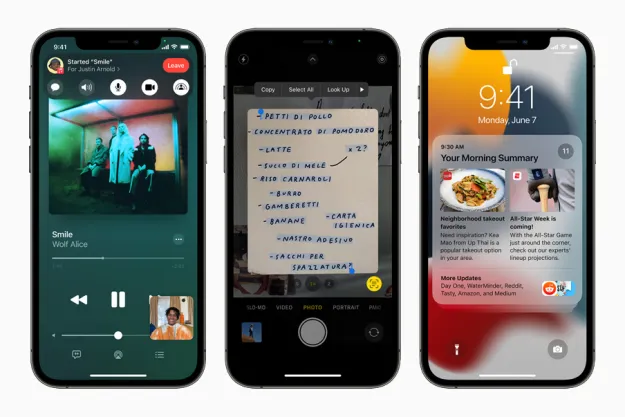
Jony Ive, Apple’s famed Chief Design Officer and resident design master since 1997, announced Thursday that he is leaving the company to form his own design company, LoveFrom. Apple will be LoveFrom’s first client, which makes sense because much of the company’s success can be directly traced back to Ive’s groundbreaking industrial designs that span a generation. When you think of Apple products — the iMac, iPod, iPhone, iPad, AirPods, and Apple Watch spring to mind — the guiding hand and conceptual mastermind behind them is Jonathan Ive alongside his long-term, tight design team.
Here are some of the most famous designs to spring from his offices in Cupertino.
Newton MessagePad

Ive’s first job at Apple was to design the second generation of the Newton MessagePad. The first generation, which hadn’t been released at the time, had serious design flaws and issues that Ives had set out to fix, while struggling to determine out how this device (was it a PDA?) would actually fit into people’s lives. While the revised and updated Newton, complete with glass screen and pen, went on to win numerous design awards, and was greatly loved by those purchased it, it was not considered a commercial success and was discontinued in 1998.
Bondi Blue iMac (aka iMac G3)

As the translucent blue face that launched a revolution in computer design, the original Bondi Blue iMac kickstarted a fun colorful look that popularized Apple products and inspired accessory makers for years. The iMac, developed under Ive’s direction, was derived from a simple idea: the CPU components were integrated into one unit and then surrounded by a translucent white and blue (Bondi blue) shell. The iMac was designed to be classic plug and play, ready to be used instantly by anyone in the family regardless of computer experience. No extra parts were required other than the matching hockey puck mouse, keyboard, and cable. This radical redesign of what had previously been all-beige struck a chord all over the planet and signaled the revision of consumer-based computing design from that point on.
While Ive certainly must have signed off on it, the Hockey Puck Mouse, that round pointing device that looked pretty but clenched users’ hands into a painful claw, turned out to be one of the most reviled of products. It was never formally attributed to Ive.
While the translucent and decorative waves overtook consumer computing, let’s not forget the original colorful Blueberry and Tangerine (iBook G3) Clamshell notebooks as well as the later sleek white, black, and aluminum cased laptops over the years punctuated by PowerBooks, MacBooks, the wispy light MacBook Air, and more.
iPod

Whether you went nuts for the mechanical scroll wheel, the touch-sensitive wheel, the all-touch interface, or the famous click wheel, the first iPod models became the ubiquitous pocket sized music player major companies (see Microsoft Zune) tried but failed to emulate. Every iPod upgrade, from its clean white exterior to its shiny, colorful metallic bodies and diminutive digital readouts, and later tiny Mini, Nano, and Shuffle models all had their fan base and sprang from the creative brain of product design guru Ive. From its launch in 2001 to the introduction of the iPhone in 2007, the iPod plugged into the ears of multiple generations of music lovers worldwide and was released in a variety of colors, finishes, and sizes. After the iPhone launch, the design converged into the iPhone with the iPod touch. But many of those original models and old nanos, shuffles, and minis are still part of peoples’ collections today, serving as anything from small desktop or pocket music players to hard drive storage.
iPhone

What was it about the all glass front that reminded people of Apple’s previous touchscreen device, the Newton MessagePad? The history of iPhone was a bit complex as the design team had started out investigating how touchscreen devices and tablets might fit into Apple’s overall product lineup. While it did not start out as a phone, and harked back to the MessagePad, the iPhone form factor is largely attributed to Ive. While various incarnations of the product had been tested since 2004, Apple’s CEO Steve Jobs felt that a tablet would not prove as critical to the public as a radically re-invented cell phone. So with tech that was eventually also used in the iPad, Jobs, launched the iPhone at Macworld Expo in 2007. A non-phone version was introduced shortly thereafter as the iPod touch.
iPad

After the launch of the iPhone, Ives and the design team circled back to their previous designs and came up with an all-glass, touch screen device they called iPad, that again somewhat resembled the old Newton in broad concept. This new device got a lot of traction from artists, designers, and regular consumers. Available with both built-in Wi-Fi as well as cellular capabilities, and taking the technology that had gone into the iPhone back to its original tablet format, Apple, under the direction of Ive, executed another huge home run in the marketplace.
Apple Watch

From the shape of the watch — a rounded rectangle — to the construction of the straps — Ive had a dominant role in inventing the Apple Watch, a product that came to him in 2011 after the death of Steve Jobs. He sought to formulate a “wearable notification device” that could be paired with an iPhone. Observing Google Glass crystallized to the Apple designer that this device should be on the wrist, not on the face.
AirPods

While they are not universally loved and even sometimes mocked, Apple’s AirPods are the first wireless Bluetooth earbuds from Apple and are bestsellers, with 35 million units sold in 2018 alone. They were first released in December 2016, with a second iteration, featuring improved battery life released this year.
Intersection of hardware and software

While Ive has been credited as an industrial genius with a preference for unique looking hardware, his tenure at Apple has also encompassed significant participation in interface initiatives, and since late 2012, he assumed control of Apple’s human interface (HI) project, unifying hardware and software design. He was also instrumental in the redesign of iPhone and iPod touch interfaces with iOS 7 and participated in the design of OS X Yosemite. And his grandest vision yet was the design of Apple Park, the company’s new headquarters and the last project Ives worked on with his “spiritual partner” Steve Jobs before his death.
Some misses

While successes outnumbered failures in the Ives lineup of Apple products, there were a few stumbles along the way. An almost forgotten miss in the pre-iPhone era was the iPod Hi-Fi, a boombox-style speaker system released in 2006, and designed for use with any iPod player. The iPod Hi-Fi was discontinued a year-and-a-half later. Ives has also taken some hits for the Magic Mouse 2 and the first generation of the Apple Pencil, both of which had awkward charging methodologies: the Magic Mouse charged on its back and the Pencil stuck out of the iPad’s Lightning port.
Past and future converge
Ive is credited with the conception and execution of a great majority of Apple’s most famous and successful products, but he never claimed to work alone. He and his team of designers took inspiration and ideas from many sources, especially the company’s founder and late CEO Steve Jobs. Perhaps with the new design firm, Ive will once again have a hand in a unique new Apple product — or even revolutionize design for another client.
Editors' Recommendations
- Shopping at Apple this holiday season? You should know this
- iPhone 15 Pro overheating? Apple is (finally) on the case
- Check out this old news report of when Apple released the first iPhone
- Hermès removes all leather Apple Watch bands from its site
- Apple just gave you a reason to ditch your Mac for an iPad




